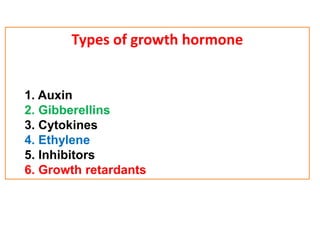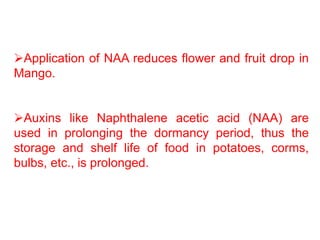This document discusses plant growth hormones, including their definitions, types, functions, and uses in agriculture. It covers the major classes of plant hormones: auxins, gibberellins, cytokines, ethylene, inhibitors, and growth retardants. For each class, it provides examples and describes their roles in processes like cell division, elongation, flowering, fruit ripening and sex expression. It also summarizes several practical applications of hormones in crops for practices like rooting cuttings, controlling weed growth, delaying fruit drop, and improving yield.







































